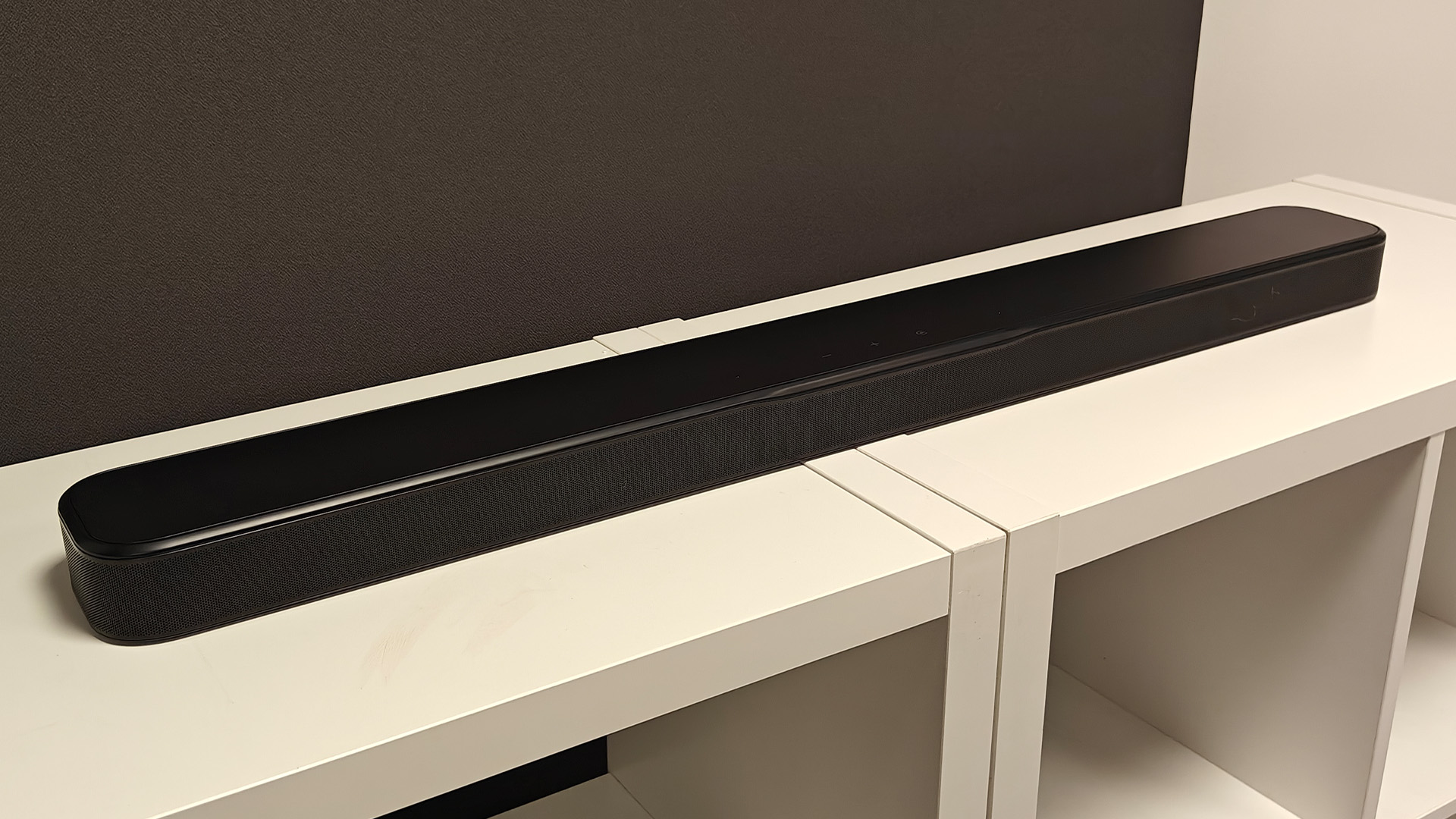BenQ W2720i vs BenQ X3100i: which of these five-star projectors should you buy?
Exceptional picture quality guaranteed – but the right choice depends on how you'll use it
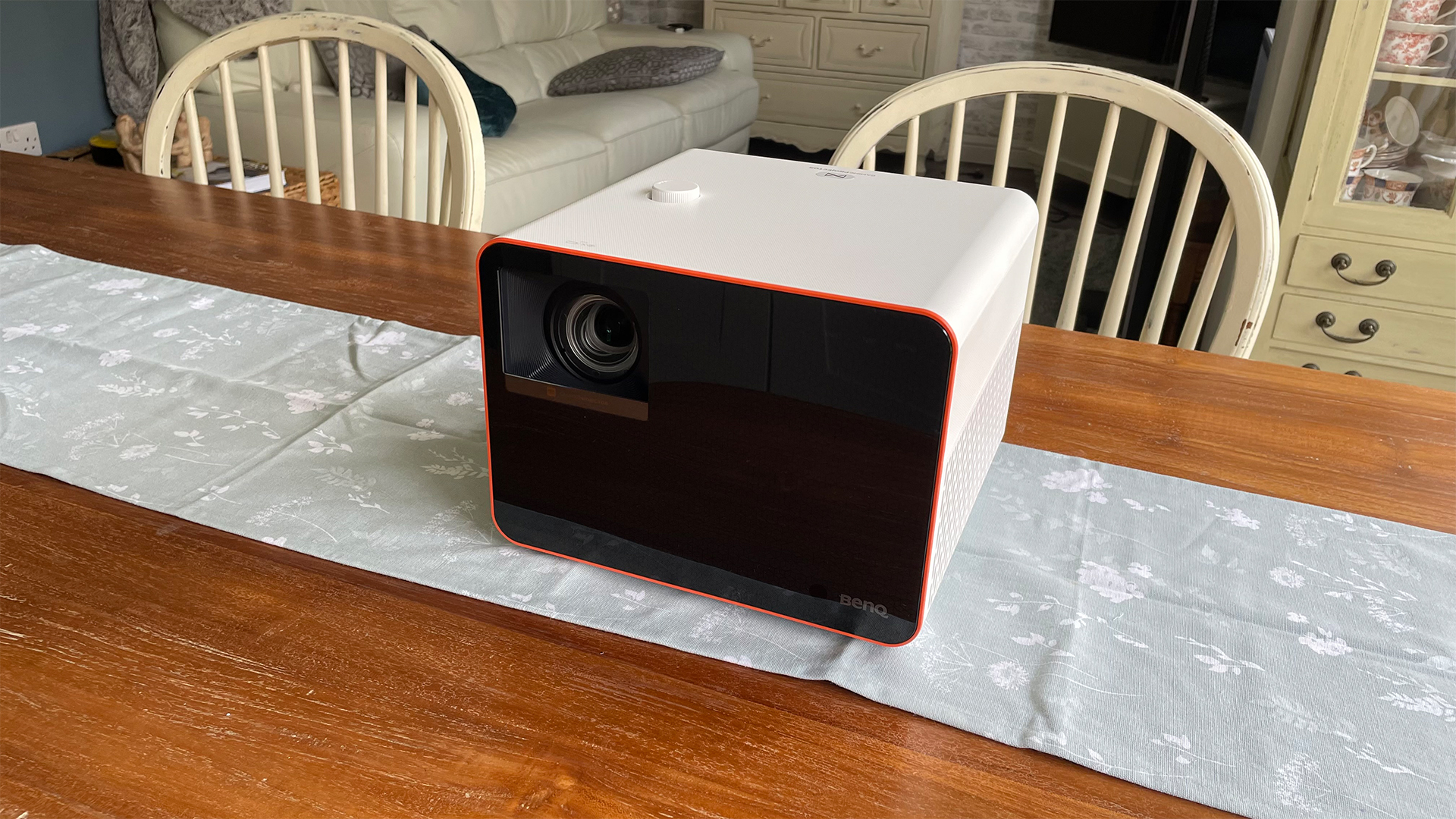

Projector type LED-lit DLP
Screen size up to 300 inches (claimed)
Native resolution 4K (via DLP XPR technology)
Input lag 17.8ms (60Hz)
HDR support HLG, HDR10, HDR10+
Dimensions 14 x 42 x 31cm
The W2720i excels as a versatile all-rounder that bridges serious home cinema and casual viewing. Factory calibration, comprehensive HDR support, and robust smart features deliver a solid spec alongside natural, organic 4K-style image quality.
Pros
- Excellent picture quality
- Effective smart system
- Good value
Cons
- Minor whiteouts in HDR peaks
- Average built-in sound system
- No Game preset
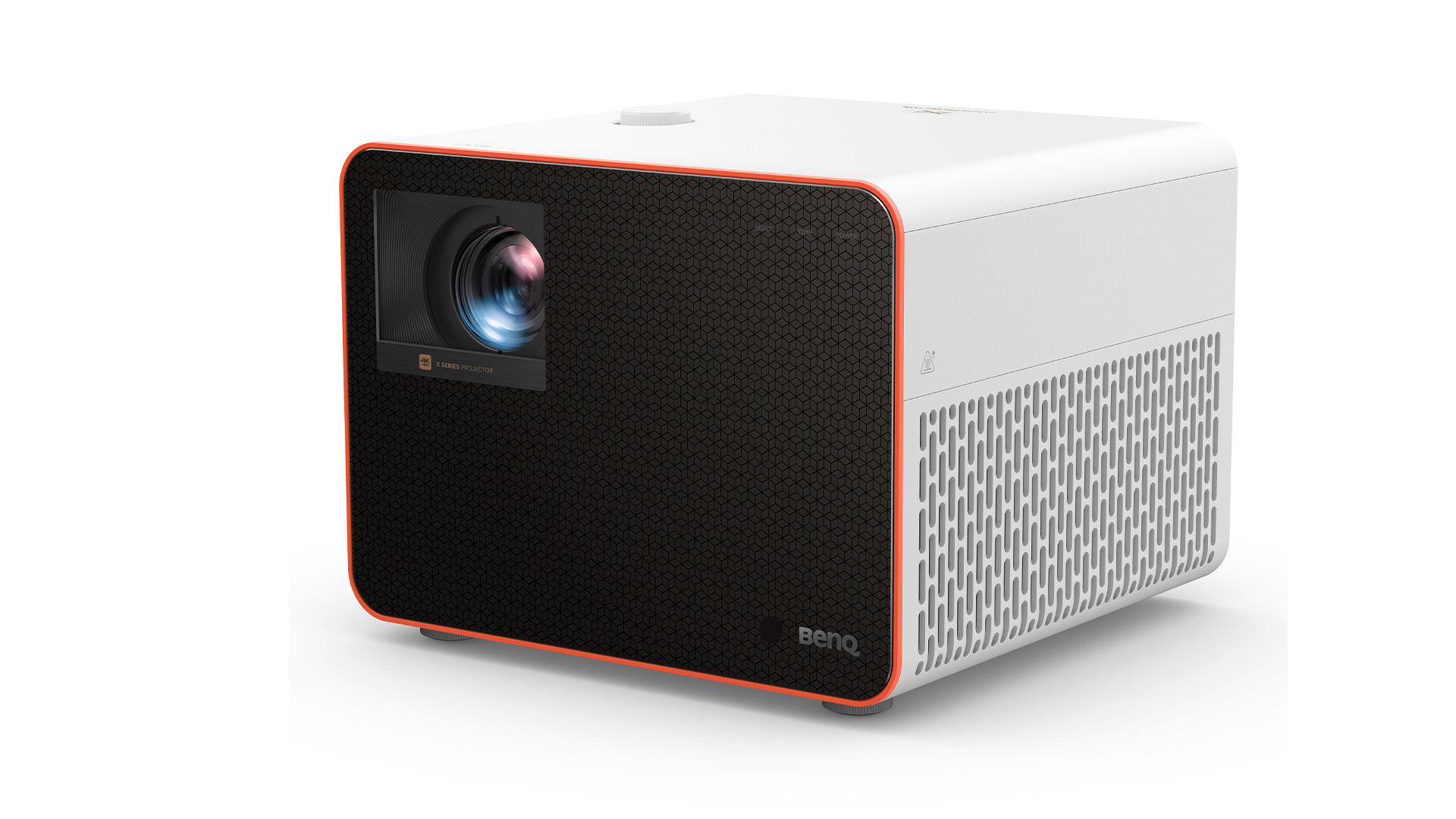
Projector type 4LED DLP
Screen size Up to 200in (claimed)
Native resolution 3840x2160 (via DLP XPR pixel shifting)
Input lag 9ms (with 60Hz in fast response mode)
HDR support HDR10, HLG
Dimensions 21 x 27 x 26 cm
BenQ's flagship gaming projector offers ultra-responsive performance with just over 4ms input lag at 120Hz. It delivers enhanced brightness and colour volume, with specialist gaming features to boot. Despite its gaming focus, it delivers equally impressive movie performance too.
Pros
- Good picture quality
- Good gaming features and performance
- Long LED lamp life
Cons
- Limited Android TV smart system
- No 4K/120Hz or Dolby Vision support
- Slight rainbow effect
If you want to get one of the best projectors around at this mid-market price, then these two BenQ models should really be on your radar.
Both the BenQ W2720i and BenQ X3100i have earned five-star ratings in our in-depth reviews, but they serve distinctly different purposes.
The W2720i positions itself as a versatile all-rounder with serious home cinema credentials, while the X3100i is specifically designed as a flagship gaming projector that happens to excel with movies too.
Each brings unique strengths to the table, but which one deserves your cash? Let’s find out.
BenQ W2720i vs BenQ X3100i: price
The BenQ W2720i carries an asking price of $2599 / £1999 / AU$3299. This pricing initially appears steep for what might seem like a casual living-room projector, but the comprehensive feature set and factory calibration help justify the investment.
The BenQ X3100i, meanwhile, will set you back $2399 / £2099 / AUS$3599, representing a premium over the W2720i in most markets. This higher price reflects its flagship gaming projector status within BenQ's range, along with the inclusion of the 4LED lighting system and enhanced built-in audio.
While both projectors command serious money, the X3100i's marginally higher price positions it as the more premium option, though the difference is relatively modest considering the distinct target audiences.
The latest hi-fi, home cinema and tech news, reviews, buying advice and deals, direct to your inbox.
**Winner: BenQ W2720i**
BenQ W2720i vs BenQ X3100i: design
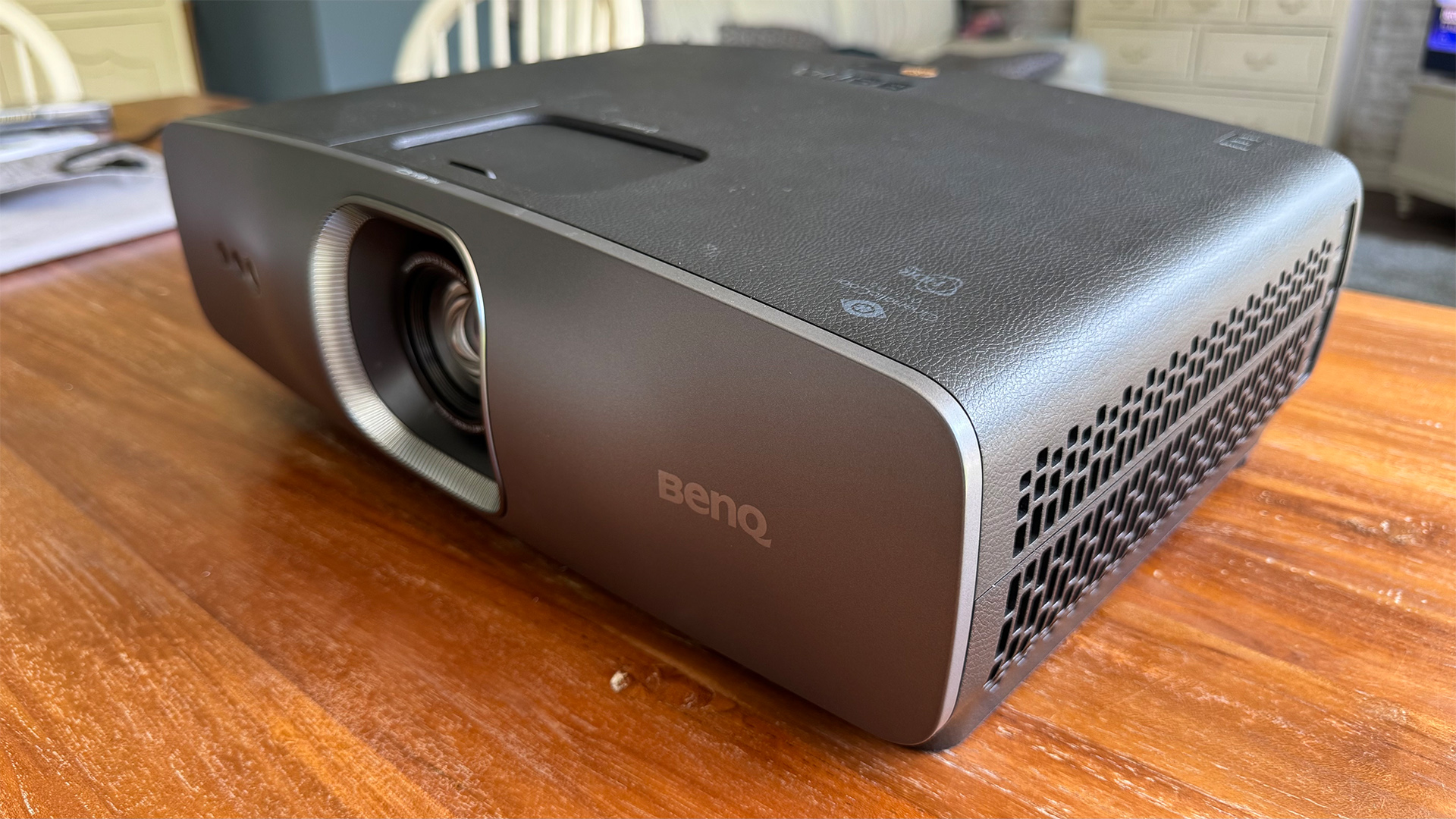
The design philosophy of these two projectors couldn't be more different, reflecting their distinct target markets and intended use cases.
The W2720i (pictured, above) adopts a more conventional projector design, albeit one that's been thoughtfully refined. While larger than typical casual 'coffee table' projectors, it remains quite attractive by projector standards.
Its edges are nicely rounded off, its top edge enjoys a curved design that further softens the projector's presence, and the substantial, centrally placed lens is tucked within a neat recess surrounded by silvery strip highlights.
The included remote control continues this theme with its rounded shape, comfortable grip, premium white gloss finish, logical button layout, and backlit buttons for dark-room operation.
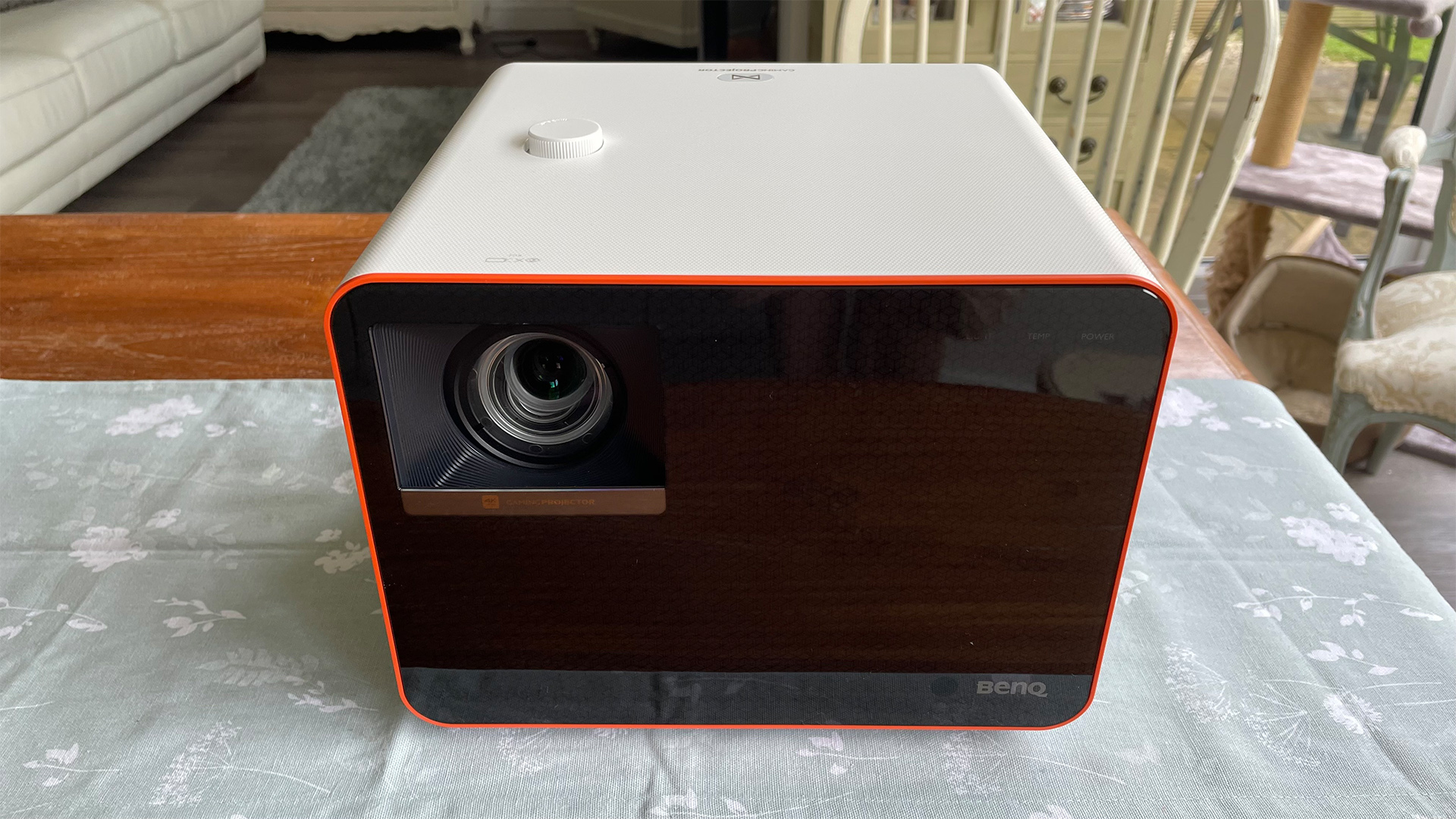
In stark contrast, the X3100i (pictured, above) embraces a bold, cubic shell that's as much a design statement as it is functional. Standing far taller than typical projectors – almost as tall as it is wide – the projector features a crisp, living room-friendly white finish on top and sides, contrasted by a glassy black front fascia with orange trim running around its outer edges.
The rounded edges and corners soften what might otherwise have been a sharp appearance. The grilled finish on the bottom half of each side helps the projector expel heat from its LED lighting system and emit sound from the built-in speakers.
The X3100i's lens sits in the top-left corner of the black fascia, while the top edge holds a simple wheel-style vertical image shifter. The left side contains a 'window' for accessing zoom and focus adjustments around the lens barrel, plus a selection of on-unit control buttons. The top edge can be removed to access a hidden HDMI bay for the Android TV streaming dongle, maintaining a tidy appearance while freeing up visible connections.
Both projectors succeed in their respective design briefs, but the X3100i's bold, contemporary aesthetic gives it the edge for visual impact. Having said that, design is subjective, it’s all down to your personal preference.
**Winner: Draw**
BenQ W2720i vs BenQ X3100i: features

Both projectors share DLP projection technology with LED illumination, but their feature sets reveal their different priorities and target audiences.
The W2720i utilises LED lamps claimed to deliver 30,000 hours of use without replacement – sufficient for around 15,000 movies. Peak brightness reaches a claimed 2500 lumens with a dynamic contrast ratio of 2,000,000:1.
Colour coverage achieves 90 per cent of the DCI-P3 HDR spectrum and 98 per cent of Rec 709 SDR. Factory calibration comes as standard with a certificate included in the box, while Filmmaker Mode ensures adherence to established image standards.
Connectivity proves comprehensive with three HDMI ports – one supporting ARC for passing sound (including Dolby Atmos tracks to connected equipment), and another handling 4K/120Hz feeds (though not VRR).
Additional connections include two USB ports (one offering 2.5A power), RS232C and 12V trigger ports for home automation, plus 3.5mm and digital optical audio outputs. The projector supports Wi-Fi, Bluetooth, Apple AirPlay, and Google Cast, feeding its integrated Android TV smart system.
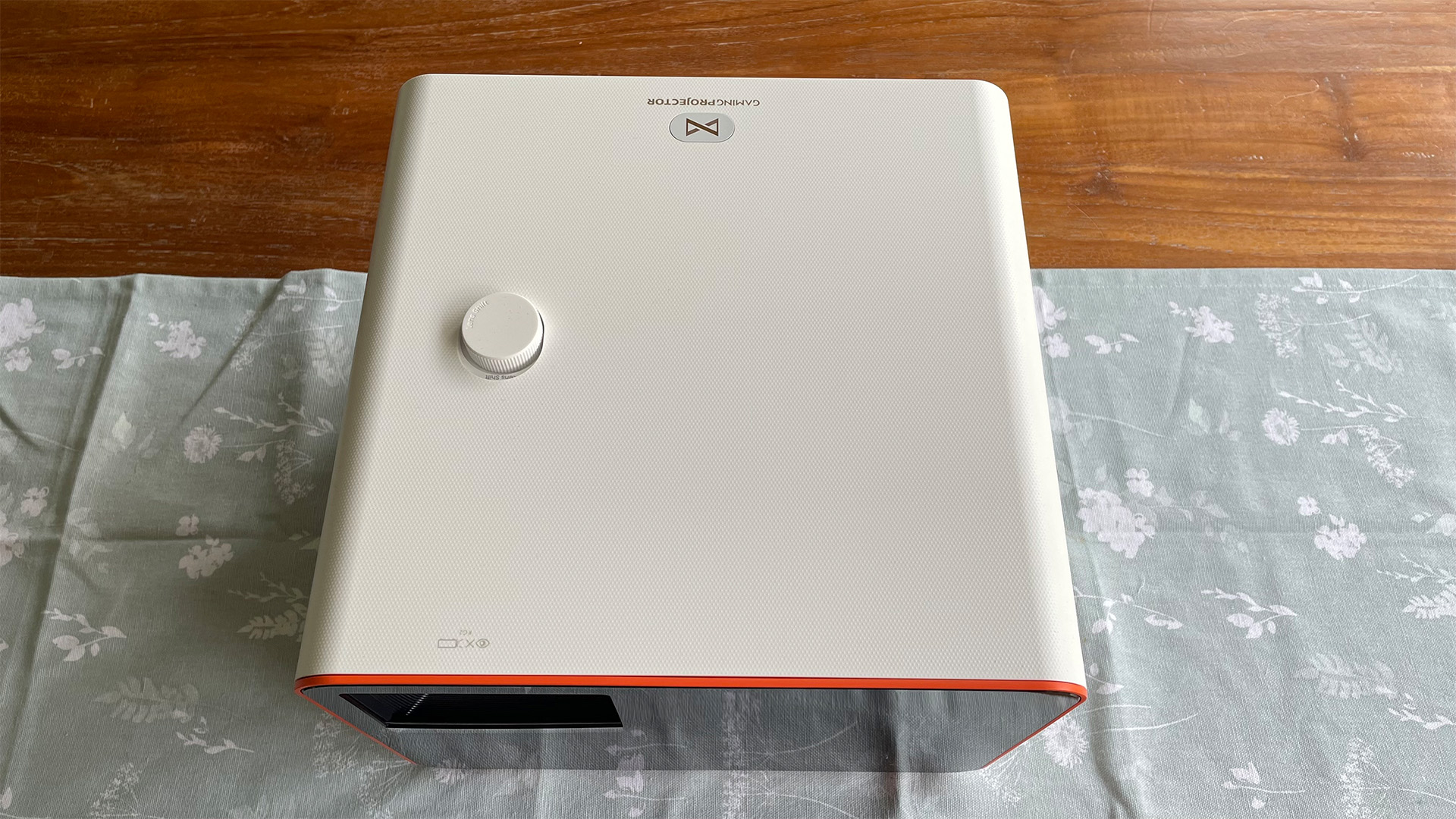
The X3100i, on the other hand, has a 4LED lighting system that adds an extra 'pump' LED to the usual red, green, and blue LEDs. This extends projector life to a claimed 30,000 hours, enables a relatively small footprint, and amplifies green light output to enhance brightness.
BenQ claims that the X3100i is 12 per cent brighter than regular 3LED setups. It also claims to cover 100 per cent of the DCI-P3 range, with BenQ stating the 4LED system produces 20 per cent 'bolder' colours than regular lamp projectors.
Gaming features prove extensive, with input lag dropping to just over 4ms with 120Hz feeds – a remarkably low figure by projector standards. Four specialist gaming presets adjust both picture and sound for different gaming genres, while the SettingXchange facility allows downloading of projector settings created by celebrity gamers.
HDMI 2.0b connections support 4K at 60Hz and 1080p at 120Hz, plus ALLM switching and eARC for passing 7.1 and lossless Dolby Atmos soundtracks. Additional gaming features include digital zoom and an on-screen crosshair option.
Smart features on both rely on Android TV, though the X3100i's implementation via a separate dongle proves more problematic, with a fair few bugs and crashes discovered during our testing.
Overall, the W2720i offers broader HDR format support including HDR10+, more comprehensive connectivity with three HDMI ports, and superior smart TV implementation.
However, the X3100i counters with advanced 4LED lighting technology, extensive gaming-specific features, and enhanced audio processing.
Both achieve strong feature sets suited to their respective audiences.
**Winner: Draw**
BenQ W2720i vs BenQ X3100i: picture quality
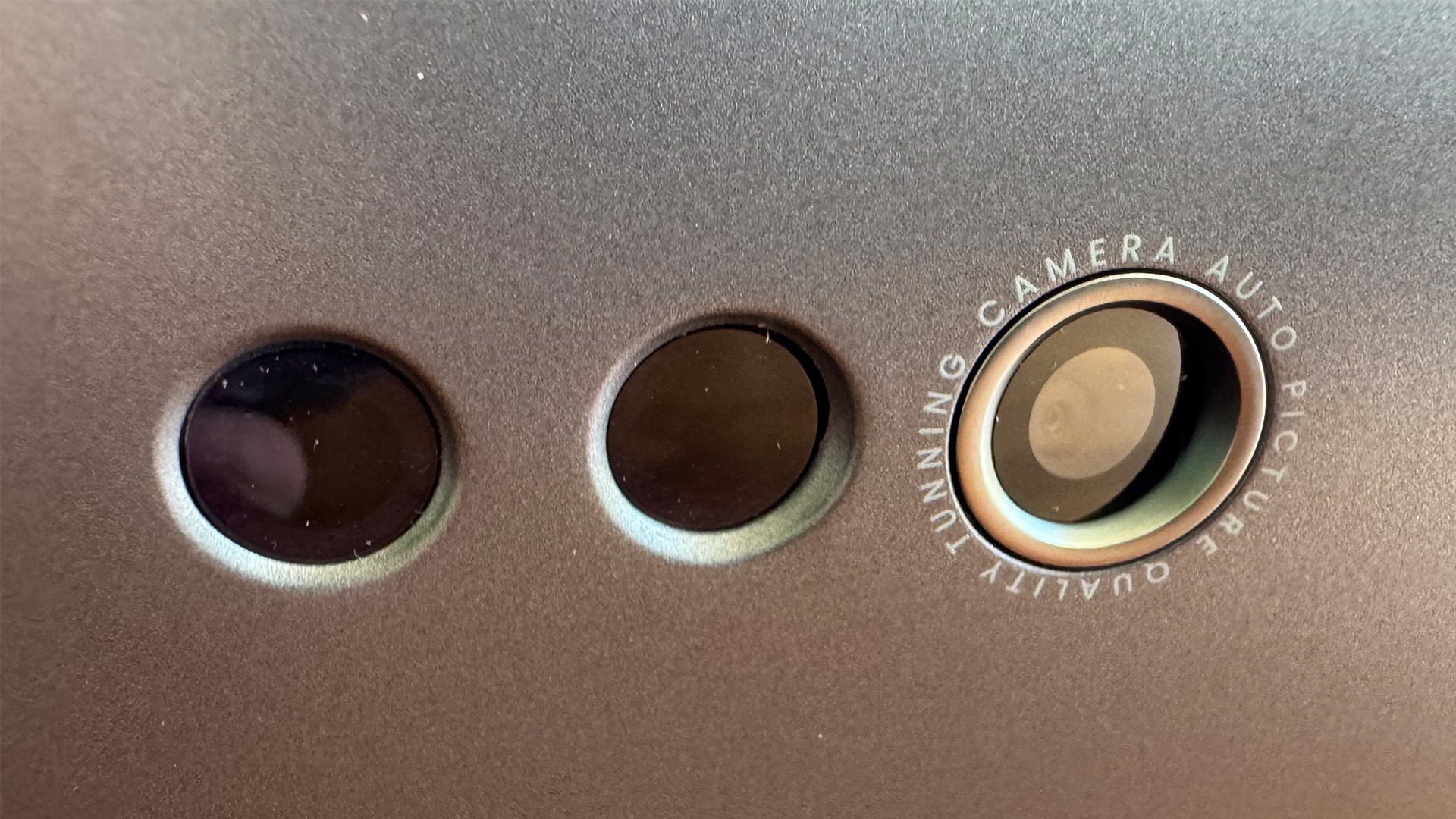
Before diving into the picture quality, it's important to point out that neither projector offers true native 4K resolution. Both employ DLP's XPR (eXpanded Pixel Resolution) technology, which uses rapid pixel-shifting to create a 4K effect rather than displaying 8.3 million pixels simultaneously.
The W2720i achieves this through pixel-shifting/double flashing technology to achieve a 'virtual' 4K image, while the X3100i uses switchable mirrors on the DLP chipset flashed multiple times per image frame to create a Consumer Technology Association-approved 4K effect.
While purists may scoff at these claims, our testing found the results convincing enough that images genuinely appear to possess 4K-quality sharpness and detail.
In short, both projectors deliver exceptional picture quality that justifies their five-star ratings, though each excels in slightly different areas, reflecting their intended purposes.
The W2720i produces phenomenally sharp images that appear to hit a 4K resolution, despite using DLP's pixel-shifting XPR technology. The sharpness feels entirely natural and organic rather than artificially processed, maintaining precision even at larger image sizes. Motion handling proves excellent with 24p movie sources thanks to natural, cinematic judder handling with the 24P True Cinema setting.
Contrast performance proves excellent as well, striking a convincing balance between the high brightness that HDR sources require and the deep black colours needed for compelling dark scenes.
Bright scenes enjoy plenty of punch with surprisingly intense small light peaks, while dark scenes avoid excessive grey clouding and retain shadow detail. The W2720i's dynamic contrast system operates without distracting flickering issues despite continual brightness adjustments.
Colour reproduction maintains natural balance with no tones appearing forced or overly prominent. The projector covers a sufficient DCI-P3 spectrum that vibrant colour areas don't look rolled off, while subtle colour gradations ensure smooth blends and three-dimensional object rendering. Skin tones receive particularly careful handling, avoiding both plasticky appearances and the green/red/jaundiced tones that affect lesser projectors.
The W2720i adapts expertly to SDR sources and excels with gaming once Fast mode is activated and video processing features are disabled. Its native streaming apps deliver consistently excellent picture quality across all major platforms.
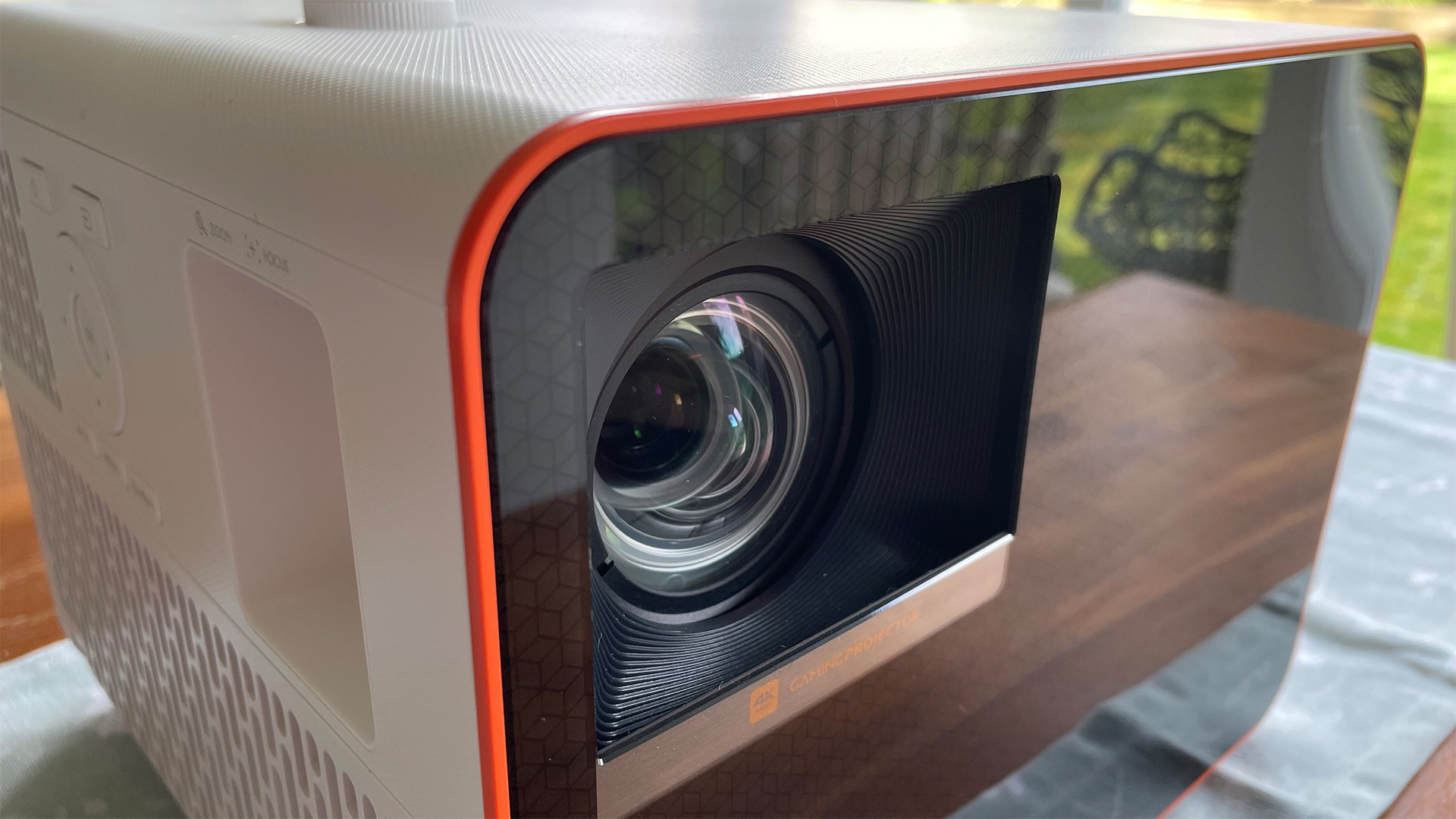
The X3100i delivers equally impressive results, with its 3300 lumens of peak brightness providing sufficient intensity for convincing HDR presentation.
The SSI Dynamic Black feature proves remarkably effective at controlling the 4LED lighting to produce natural-looking black levels while maintaining bright highlight intensity. These constant brightness adjustments occur without obvious instability, maintaining consistent, natural-looking pictures during both bright and dark scenes.
Colour performance proves exceptional too, with vibrant animated content displaying dazzlingly rich saturations while maintaining balance. Natural imagery appears consistently authentic without compression noise or banding. The projector's colour rendering also demonstrates such subtlety that images provide three-dimensionality and detail, which makes 4K-like claims entirely believable.
They do, however, occasionally suffer minor limitations – we found the W2720i can show greyness in dark scenes when extremely bright highlights appear, while the X3100i may display slight DLP rainbow effects with bright objects. However, these issues occur infrequently and don't significantly impact viewing enjoyment.
Both projectors deliver exceptional picture quality that merits their five-star ratings. The performance differences are marginal – the W2720i offers broader HDR format support including HDR10+, while the X3100i provides slightly higher peak brightness at 3300 lumens compared to the W2720i's 2500 lumens through its 4LED system. The X3100i's enhanced colour volume from its 4LED technology also provides particularly vibrant results with animated content.
For pure visual performance, this is essentially a draw, with the choice depending on whether comprehensive HDR format support or maximum brightness and colour saturation takes priority for your viewing preferences.
**Winner: Draw**
BenQ W2720i vs BenQ X3100i: sound quality
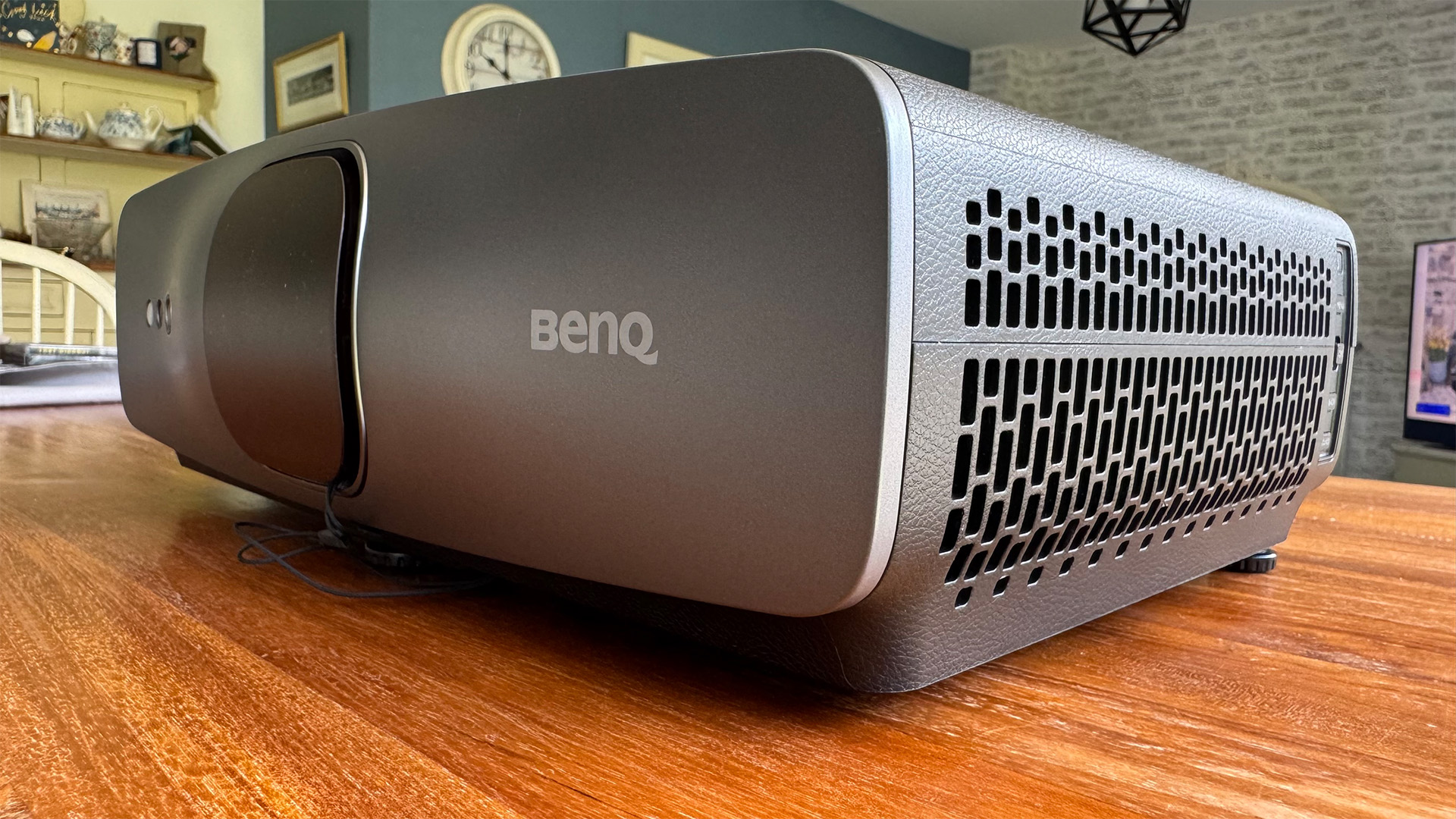
Both projectors include built-in speaker systems – the W2720i features 2x5W stereo speakers, while the X3100i offers a 5W stereo system powered by CinematicSound technology with Bongiovi DPS audio processing promising three-dimensional surround effects.
In testing, the W2720i's 2x5W stereo speaker system struggles with power delivery, failing to achieve sufficient volume even at maximum settings. This denies soundtracks the impact needed to match the projector's impressive visual scale.
However, the speakers do project dialogue, ambient effects and treble content a decent distance from the projector body, creating a larger soundstage than most projector systems manage. Low-frequency sounds don't escape the bodywork as readily, potentially creating disconnection during loud scenes, though bass tones demonstrate reasonable quality, and the speakers avoid distortion.
The X3100i's 5W stereo system, enhanced by its cubic design and CinematicSound technology, delivers markedly superior performance. The distinctive shape gives sound more room to develop, while Bongiovi DPS audio processing creates convincing three-dimensional surround effects from the two-speaker configuration.
In Cinema mode, aspects of the surround sound mix reach a surprising distance away from the projector, creating immersion for appropriately positioned listeners. Dynamic range proves impressive as well, with crisp trebles and deeper bass than most projector systems achieve.
The midrange remains well-rounded and clean, with dialogue maintaining clarity without losing context. The speakers demonstrate awareness of their limitations, avoiding distortions that plague overly ambitious projector audio.
The X3100i's limitations centre on insufficient volume to match large-scale picture capability, and some midrange feeling trapped within the projector body unless listeners occupy optimal positions.
While neither projector eliminates the need for external audio for serious viewing (you’ll definitely want at least one of the best soundbars to do their pictures justice, if not a surround sound system), the X3100i's more sophisticated approach and superior performance make it the clear winner.
**Winner: BenQ X3100i**
BenQ W2720i vs BenQ X3100i: verdict
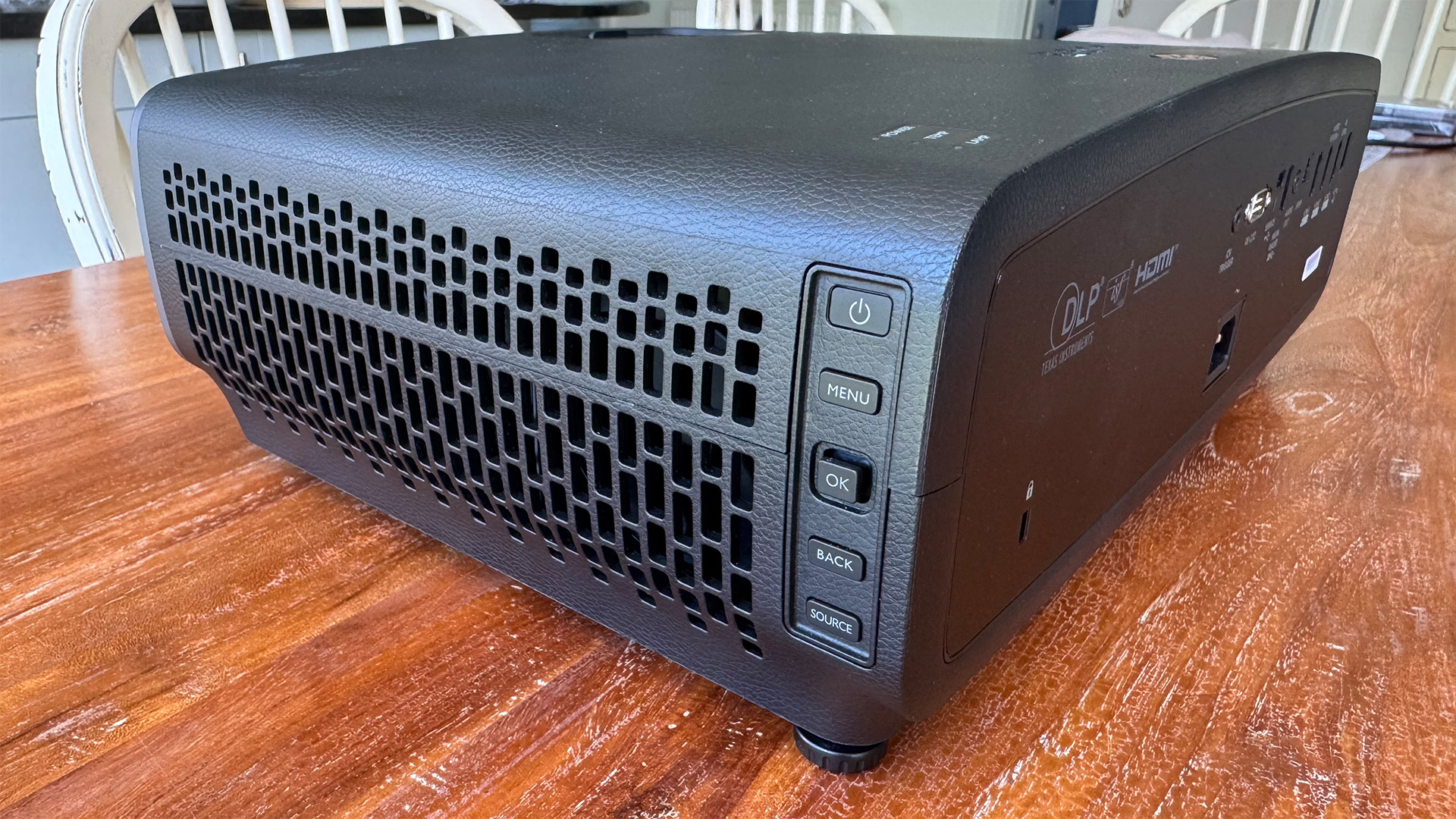
Both the BenQ W2720i and X3100i represent outstanding achievements in projector design, each delivering five-star performance within their respective specialities. The choice between them depends entirely on your primary intended usage and specific requirements.
The W2720i succeeds brilliantly as a genuine all-rounder, offering serious home cinema credentials through factory calibration, Filmmaker Mode, and comprehensive HDR support, while simultaneously providing casual living-room convenience via built-in speakers, auto setup, and excellent smart TV functionality.
Its natural, organic picture quality and broad content compatibility make it ideal for households wanting one projector to handle everything from movie nights to casual streaming.
The X3100i excels as a flagship gaming projector that delivers exceptional movie performance. Its ultra-low input lag, gaming-specific features, and specialist presets make it perfect for serious gamers, while its superior built-in audio and distinctive design add living-room appeal. The 4LED lighting system provides enhanced brightness and colour performance, benefiting both gaming and movie content.
For most users seeking maximum versatility, the W2720i represents the better choice. Its lower price, superior smart TV implementation, broader HDR support, and excellent all-round performance make it ideal for households wanting exceptional projection without gaming-specific requirements.
However, for gaming enthusiasts who also appreciate quality movie projection, the X3100i justifies its premium through ultra-responsive performance, enhanced audio system, and eye-catching design.
**Overall winner: BenQ W2720i**

You must confirm your public display name before commenting
Please logout and then login again, you will then be prompted to enter your display name.
